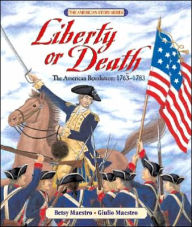Lynne Cheney’s most recent book is the New York Times bestseller, We the People: The Story of Our Constitution, illustrated by Greg Harlin. She is also the author of the New York Times bestsellers America: A Patriotic Primer, A Is for Abigail: An Almanac of Amazing American Women, When Washington Crossed the Delaware: A Wintertime Story for Young Patriots, A Time for Freedom: What Happened When in America, and Our 50 States: A Family Adventure Across America, and has written a memoir, Blue Skies, No Fences. Mrs. Cheney is a senior fellow at the American Enterprise Institute and former chair of the National Endowment for the Humanities. She lives in Washington, DC, with her husband, Vice President Richard B. Cheney.
Peter M. Fiore has illustrated many books for children, including Touching the Sky by Louise Borden and Henry David's House, edited by Steven Schnur. Mr. Fiore has been interested in art since he was a young boy, and in addition to his book work, Mr. Fiore is well known as a fine artist. Mr. Fiore has received many awards and citations for his editorial illustration, including a Silver Medal from the Society of Illustrators.
Mr. Fiore lives along the Delaware River in Pennsylvania with his family.










